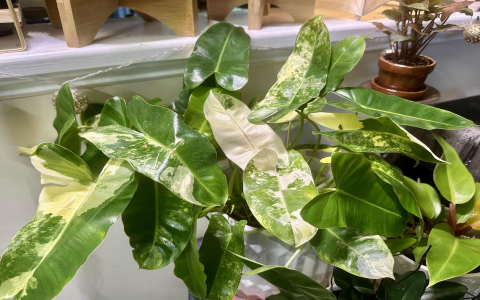You know, this whole adventure into finding the “costliest plant in the world” started pretty innocently. I was just tidying up my own little collection of houseplants, nothing fancy, mostly stuff I rescued or got as gifts. And it just popped into my head – what’s the absolute top tier? Like, the Rolls Royce of the plant kingdom?
So, I did what anyone does these days: I started digging online. My first few searches were, well, a bit all over the place. You get these lists, right? And they all seem to have slightly different ideas. Some were talking about rare orchids, others about weird, exotic fruit trees. It was a bit of a muddle, to be honest.
My Initial Thoughts and Wild Guesses
At first, I figured it had to be something incredibly rare, maybe hidden deep in a jungle somewhere, something that flowered once in a blue moon. I even thought about those plants that produce super valuable spices. You know the ones, where it takes a gazillion flowers to get a tiny bit of product. Made sense to me at the time.
I spent a good few evenings just clicking through articles, forums, even some academic-looking papers, though most of those were way over my head. It was a real rabbit hole. I started a little notepad, jotting down names and supposed prices. It was becoming a bit of an obsession, trying to pin down this single “costliest” thing.
- Orchids came up a lot. Some of them are stunning, but the prices for the really rare ones? Mind-blowing.
- Then there were these ancient trees, especially Bonsai. We’re talking trees that have been tended for generations.
- And of course, you get the flash-in-the-pan stuff, like “special edition” plants that are more hype than anything else.
What I Actually Stumbled Upon
The more I dug, the more I realized it’s not always straightforward. It’s not like buying a gold bar where the price is just the price. With plants, especially the “costliest” ones, it’s a whole different ball game. It’s about things like:
Rarity, obviously. If there are only a handful in the world, people will pay. But it’s more than that. It’s the story behind it. The effort. Sometimes, it’s pure, unadulterated human desire to own something unique.
I remember coming across stories of Bonsai trees that sold for millions. Millions! For a tiny tree in a pot. Now, don’t get me wrong, the artistry and dedication are incredible. These aren’t just plants; they’re living sculptures, tended for centuries sometimes. The sheer amount of time and skill poured into them is what jacks up the price. It’s not just the plant; it’s the human history attached to it.
Then there are those super-specialized orchids. Some are so hard to cultivate, or they have such specific needs, that just keeping them alive is a feat, let alone propagating them. I found out that collectors go nuts for these. It’s like a secret club for the ultra-rich plant nerds.
And sometimes, it’s not even about a plant you can buy. I read about a flower called the Kadupul flower, often dubbed “priceless” because it blooms so rarely, usually at night, and then wilts before dawn. You can’t really sell it. How do you put a price on something like that? It’s more legend than commodity.
My Takeaway from This Whole Thing
So, after all that searching, did I find the single costliest plant? Well, yes and no. It depends on how you define “costliest.” If you’re talking about a plant sold at auction, it’s probably some ancient Bonsai or a unique orchid hybrid. If you’re talking about the value of its product, maybe something like saffron still ranks up there in terms of effort vs. yield.
But honestly, the biggest thing I learned wasn’t a specific plant name. It was how much passion, history, and sometimes sheer stubbornness can make something from nature incredibly valuable to us humans. It’s kind of wild when you think about it. I started just wanting a simple answer, and I ended up understanding a whole lot more about human nature and our obsession with the rare and beautiful. Still just tending my own humble plants, but now I look at them with a bit more appreciation for the stories they could tell, even if they’re not worth millions. It was a fun little project, though, a good way to spend a few evenings. Keeps the mind busy, you know?
